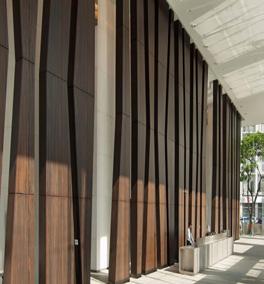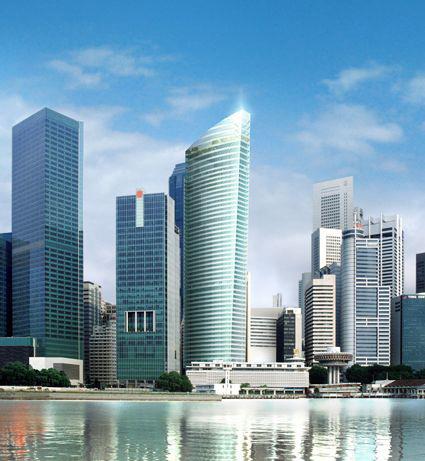
2 minute read
ZUELLIG BUILDING
Taken from:https://www.som.com/projects/zuellig-building/
About The Building
Advertisement
The building provides 62,800 m2 of Grade A office space, five levels of basement parking, a retail annex with a food court, a rooftop garden, and extensively landscaped outdoor areas. Compared to ordinary Grade A buildings, tenants benefit from energy savings of at least 16%. These savings considerably help companies achieve their sustainability and cost-efficiency goals, which are important given the limited resources and high electricity prices in the Philippines.
BUILDING DETAILS:
Project Manager: Keppel Land International Ltd
Architectural Design: Skidmore, Owings & Merrill, New York
Developer: Bridgebury Realty Corporation, an affi liate of the Zuellig Group
Size:
8,285 m2 total site area
1,700 m2 total vegetated area
66,000 m2 total GFA
Green Features
Double-Glazed Ceramic Frit Facade Fritted glass aids in glare reduction, lowers cooling costs, and lessens risk to birds. Fritted glazing is achieved by applying a diffuse pattern, or frit, to a (typically specular) glazing substrate. The frit composition is often a glass or ceramic batch that has been fused to or otherwise attached to the glazing substrate at a stage in the glass-making process. Frit can also be used to make stronger, more noticeable patterns using a silkscreen for decorative purposes.
Energy-efficient Systems Green Power, Minimum energy performance, fundamental commissioning of the building energy systems.
Water Efficiency
The effective management of potable water, the choice of efficient fittings and fixtures, the collection of rain and condensate water, the use of water-saving surface materials, and the construction of suitable drainage and irrigation systems are all examples of water conservation measures applied to the Zuellig Building.
Power Saving Lighting
A photocell-based daylight dimming system keeps the required lighting levels in communal areas by lowering electric lighting based on the amount of sunshine present. Occupancy sensors may be installed in all workplace spaces to adapt lighting to activity levels.


Indoor Air Quality
CO2 sensors are placed in densely occupied areas and return-air ducts to indicate the number of occupants and the quality of fresh air in the space. Depending on the anticipated occupancy of the area, the outside airflow is adjusted. Demand Control Ventilation (DCV) is a method for providing optimal air flows that integrates sensors, the Building Management System (BMS), and intelligent ventilation management. DCVs are made to be effective. They often prolong the lifespan of the ventilation system and need less maintenance.
Paper Recycling
A centralized paper recycling facility encourages office users to recycle their waste paper. An organization’s environmental endeavors for trash diversion can be considerably improved by the implementation of a centralized waste bin system. The fraction of the overall waste stream that is recycled or otherwise diverted from landfilling or incineration is referred to as waste diversion.
Green Areas
Local tropical plants and ground cover are being planted in the open spaces of the shop annex and the roof garden on the 32nd storey. The presence of green outdoor elements close by increases human comfort and ease, promotes outdoor physical activity, and fosters a sense of connection to nature. Having plants, taking a walk in the park, or even just glancing at a landscape poster may all have a beneficial psychological influence, lower stress levels, and enhance attention, according to Miller-study, McCune’s which shows that plants can help you feel better.







